
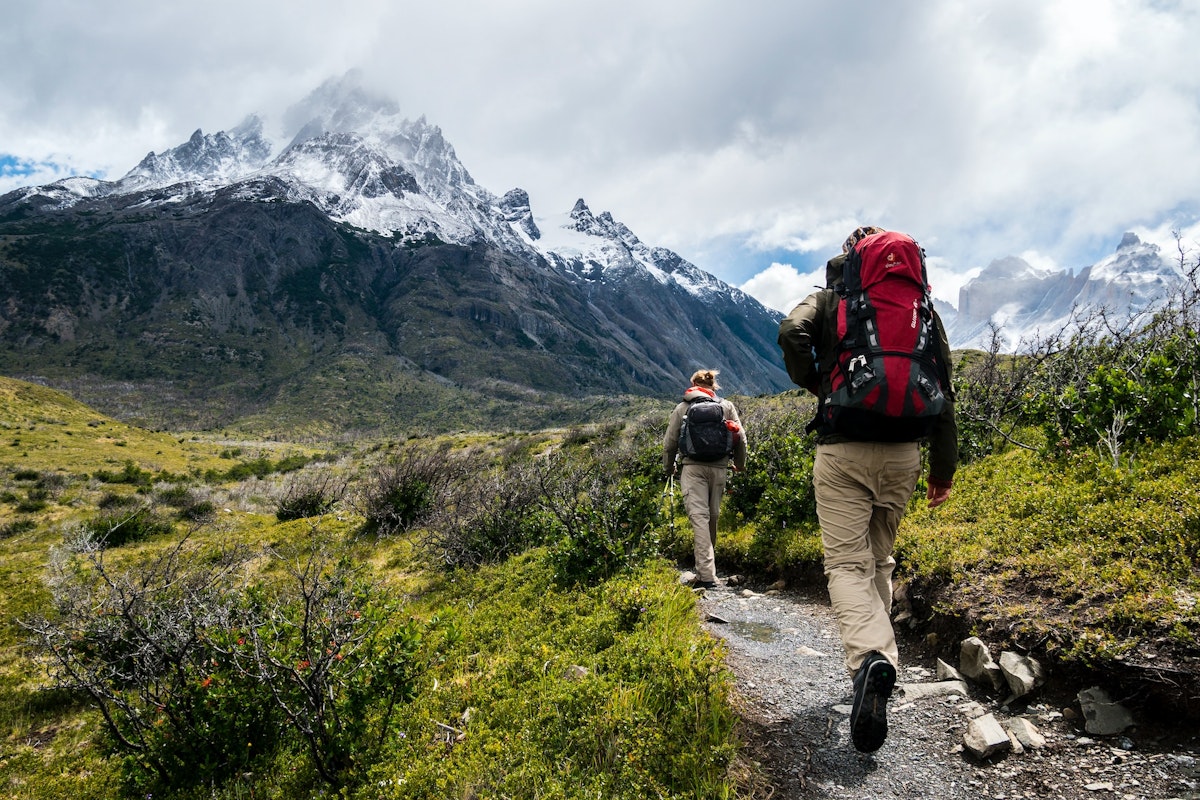
ซ่อนตัวอยู่ในตะวันออกไกล ญี่ปุ่น ดินแดนที่ประเพณีแบบดั้งเดิมและความทันสมัยอยู่ร่วมกันอย่างกลมกลืน คือสวรรค์ที่แท้จริงสำหรับผู้ที่ชอบกิจกรรมกลางแจ้ง ถูกปกคลุมด้วยภูเขาที่ปกคลุมประมาณ 70% ของภูมิประเทศของประเทศ ซึ่งเป็นสถานที่หลบภัยสำหรับนักปีนเขา โดยมีความหลากหลายของภูมิประเทศที่สัญญาว่าจะมีประสบการณ์ที่น่าจดจำมากมาย ไม่ว่าคุณจะกำลังปีนขึ้นไปบนไหล่ของภูเขาไฟฟูจิที่โด่งดัง สำรวจเส้นทางในป่าลึกลับของเกาะยะกุชิมะ หรือติดตามรอยเท้าของผู้แสวงบุญตามเส้นทางคุมาโนะโคโดโบราณ ทุกการเดินป่าในญี่ปุ่นจะเชิญชวนคุณเข้าสู่นิทานที่น่าทึ่งเกี่ยวกับประวัติศาสตร์ วัฒนธรรม และความงดงามของธรรมชาติ
การออกเดินทางในเส้นทางเดินป่าในญี่ปุ่นนั้นคล้ายกับการเดินทางผ่านเรื่องราวที่สวยงาม โดยแต่ละบทเสนอแนวคิดใหม่และการเชื่อมต่อที่ลึกซึ้งยิ่งขึ้นกับประเทศที่น่าสนใจนี้ ตั้งแต่ทิวทัศน์มุมกว้างบนยอดเทือกเขาญี่ปุ่นอันงดงามไปจนถึงบรรยากาศที่เงียบสงบของอุทยานแห่งชาติอาเซะ สเปกตรัมของเส้นทางเดินป่าในญี่ปุ่นนำเสนอการสำรวจที่ captivating ที่เข้าไปในดินแดนของประเทศ ทิวทัศน์ที่ ethereal กระซิบบอกเล่าเรื่องราวของเทพเจ้าที่โบราณ พิธีกรรมโบราณ และสิ่งมีชีวิตในตำนานที่พาผู้ที่เดินป่าไปยังดินแดนที่จิตวิญญาณปะปนกับความสง่างามของธรรมชาติ ในคู่มือนี้ เราขอเชิญคุณเข้าร่วมกับเราในขณะที่เราเดินทางไปตามเส้นทางเดินป่าต้องไป 10 เส้นทางและภูเขาที่ต้องไปในญี่ปุ่น - การเดินทางที่จะท้าทาย เป็นแรงบันดาลใจ และเปิดเผยความผสมผสานที่น่าสนใจของความสงบและการผจญภัยที่กำหนดดินแดนพระอาทิตย์ขึ้น
วัฒนธรรมการเดินป่าของญี่ปุ่นมีความหลากหลายพอๆ กับภูมิประเทศที่มีรากฐานมาจากการให้ความเคารพต่อธรรมชาติและการแสวงหาจิตวิญญาณที่มีมายาวนาน เส้นทางในประเทศสะท้อนถึงการเชื่อมต่อที่ลึกซึ้งนี้กับภูมิทัศน์ โดยมีตั้งแต่วิถีทางการแสวงบุญที่ศักดิ์สิทธิ์ไปจนถึงเส้นทางผจญภัยที่ปีนเขาสูงชันที่มีความท้าทาย เส้นทางเหล่านี้ซึ่งมีประวัติศาสตร์และนิทานพื้นบ้านทำให้ผู้ที่เดินจงรักภักดีทุกวัยเข้ามา ยกตัวอย่างเช่น ความเชื่อของคนญี่ปุ่นที่ว่า "ยามะ-โนะ-เบ" หรือ "แก่ขึ้นในการปีนเขา"
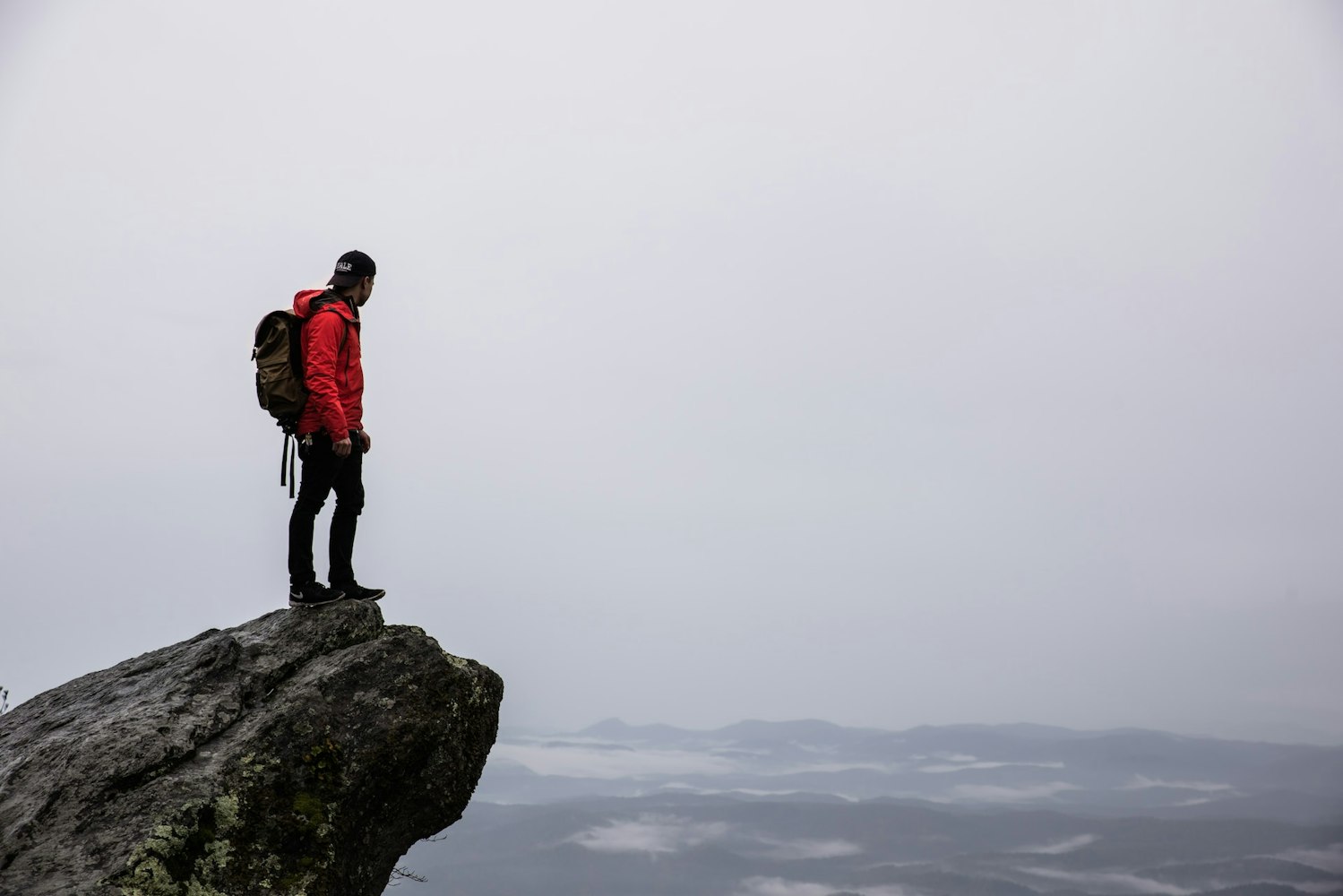
เส้นทางเดินป่าทุกเส้นในญี่ปุ่นมีเรื่องราว บางเส้นแชร์เสียงกระซิบของจิตวิญญาณเช่นเส้นทางคุมาโนะโคโดและเส้นทางบัมต์ชิคคุ ในขณะที่เส้นทางอื่น ๆ เช่น ภูเขาฟูจิและเทือกเขาญี่ปุ่นเฉลิมฉลองความงดงามที่น่าศึกษาของธรรมชาติของประเทศ แนวคิดที่เพิ่งเกิดขึ้นในช่วงหลังๆ "การลงไปในป่า" หรือ "ชินริน-โยกุ" ได้ลึกซึ้งทางวัฒนธรรมต่อการเดินป่า ปลุกใจให้ผู้คนดำดิ่งในพลังฟื้นฟูของธรรมชาติ ขณะที่เราเดินทางผ่านจุดหมายปลายทางการเดินป่าชั้นนำในญี่ปุ่น ทุกแห่งให้โอกาสพิเศษในการสัมผัสผ้าไหมที่มีชีวิตชีวาซึ่งสร้างวัฒนธรรมการเดินป่าของญี่ปุ่น
ภูเขาฟูจิ, ที่รู้จักกันโดยชาวญี่ปุ่นในชื่อฟูจิ-ซัง ไม่ได้เป็นเพียงยอดเขาที่สูงที่สุดของประเทศเท่านั้น ภูเขาอันโดดเด่นที่สูง 3,776 เมตรเป็นสัญลักษณ์ของความงดงามตามธรรมชาติของญี่ปุ่นและเป็นสถานที่ทางจิตวิญญาณที่สำคัญ บริเวณยอดเขาที่มีรูปทรงกรวยที่มีหิมะปกคลุมสวยงามได้สร้างแรงบันดาลใจให้กับงานศิลปะและวรรณกรรมจำนวนมาก ที่ทำให้ภูเขาฟูจิกลายเป็นแหล่งมรดกโลกที่ได้รับการยอมรับโดย UNESCO
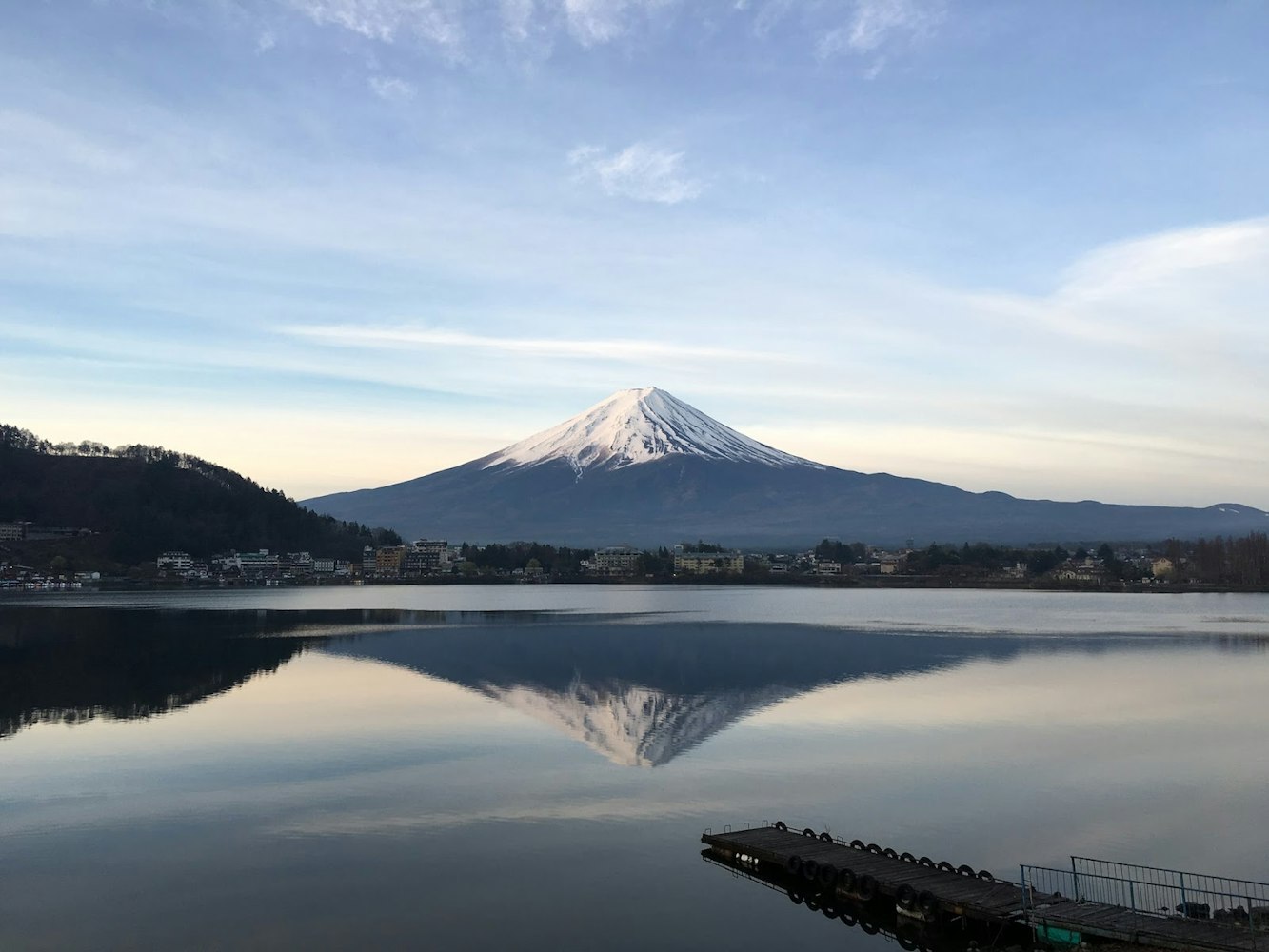
ฤดูกาลเดินป่าทางการสำหรับภูเขาฟูจิตั้งแต่ต้นเดือนกรกฎาคมถึงต้นเดือนกันยายน นักปีนเขามักจะเริ่มปีนจากสถานีที่ห้าควบคู่กับการเดินขึ้นสู่ยอดใช้เวลาประมาณ 5-7 ชั่วโมง หลายคนเลือกที่จะปีนในตอนกลางคืนเพื่อเป็นสักขีพยานใน 'โกไรโกะ' หรือพระอาทิตย์ขึ้นที่งดงามจากยอดเขา ซึ่งภูเขานั้นมีเส้นทางหลัก 4 เส้น - โยชิดะ สุบาชิริ โกเทมบะ และฟูจิโนมิยะ - ทุกอย่างนำเสนอทิวทัศน์และประสบการณ์ที่แตกต่างกัน แม้ว่าการปีนเขาจะท้าทาย แต่การไปถึงยอดภูเขาฟูจิจะเป็นประสบการณ์ที่ให้รางวัลอย่างมากและเป็นส่วนสำคัญของวัฒนธรรมการเดินป่าของญี่ปุ่น
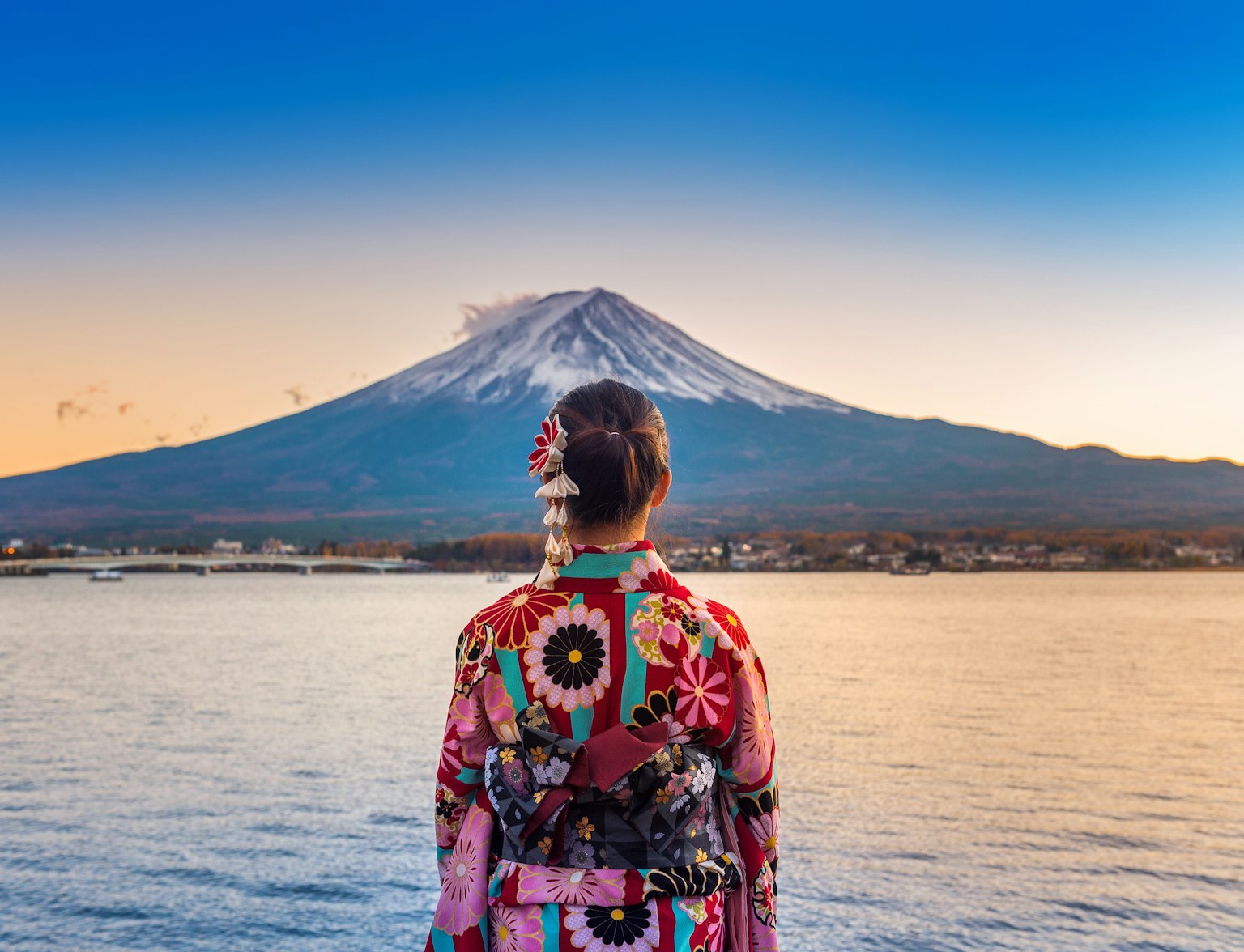
เยี่ยมชมสถานีที่ 5 ของภูเขาฟูจิด้วยทัวร์นี้
ทอดยาวข้ามเกาะฮอนชูตอนกลาง เทือกเขาญี่ปุ่นประกอบด้วยเทือกเขาที่ยิ่งใหญ่สามสาย - เทือกเขาทางเหนือ (ฮิดะ) เทือกเขากลาง (คิโซ) และเทือกเขาทางใต้ (อาคาอิชิ) สภาพภูมิประเทศที่หยาบกร้านนี้มีความโดดเด่นด้วยยอดเขาสูงที่สวยงาม หุบเขาที่สวยสดงดงาม และสัตว์ป่าจำนวนมาก ทำให้เป็นที่มาของการเดินป่าที่ท้าทายและให้รางวัลมากที่สุดในญี่ปุ่น เทือกเขาทางเหนือ มักรู้จักในชื่อ "หลังคาของญี่ปุ่น" เป็นที่ตั้งของภูเขาที่สูงที่สุดของประเทศรองจากภูเขาฟูจิ รวมถึงภูเขาฮอตากะและภูเขา Tate ที่มีชื่อเสียง หากแต่ เทือกเขากลางยังได้รับเสียงชื่นชมในเรื่องความงามตามธรรมชาติ โดยมีภูเขาคิโซโคมะซึ่งเป็นที่ชื่นชอบในหมู่นักปีนเขา ในขณะที่เทือกเขาทางใต้หรือที่เข้าถึงยากที่สุดจากสามสาย มีเส้นทางระยะไกลและภูมิประเทศที่งดงามไร้ที่ติ
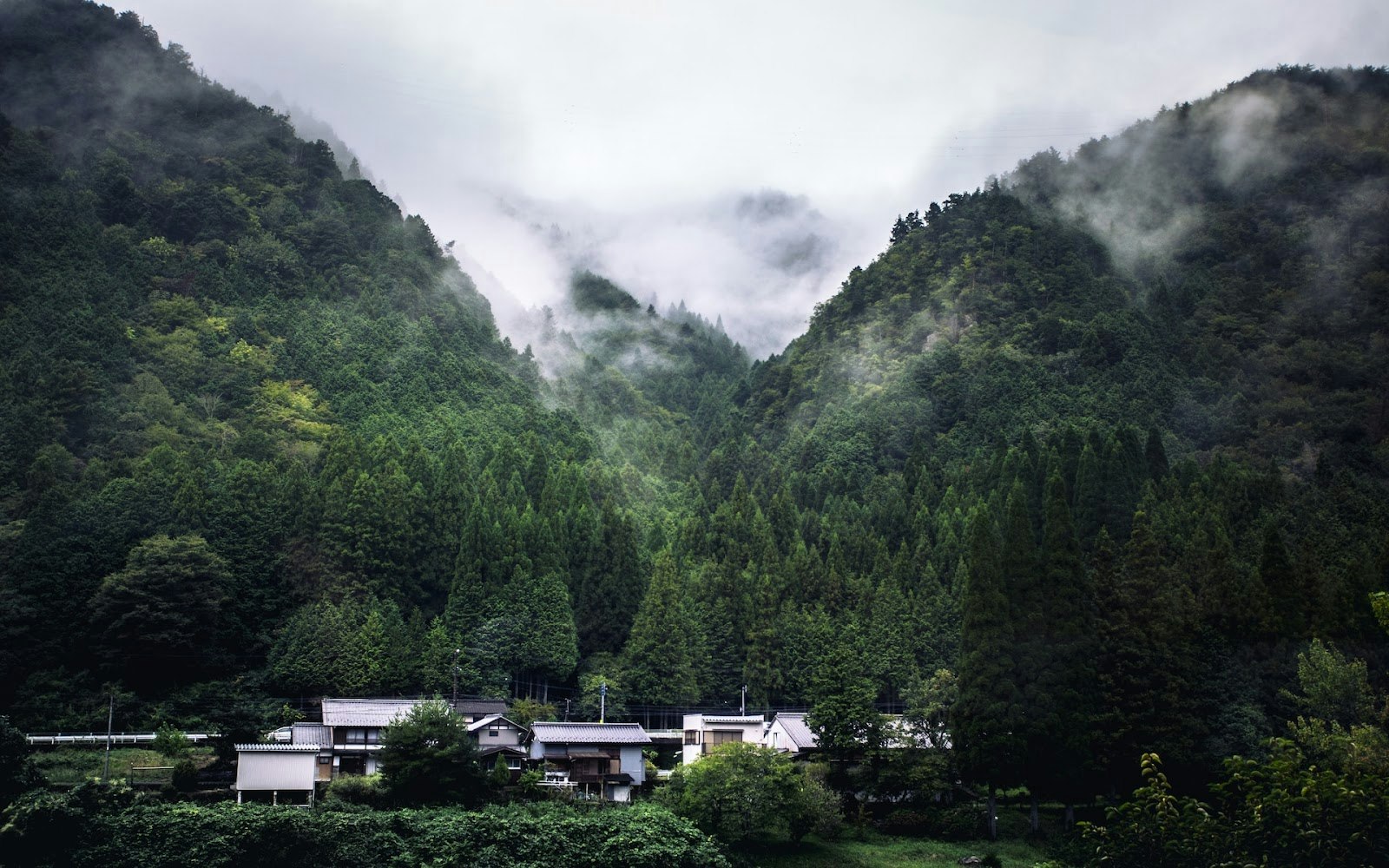
แต่ละสายภายในเทือกเขาญี่ปุ่นมีประสบการณ์การเดินป่าที่เป็นเอกลักษณ์ เทือกเขาทางเหนือเสนอเส้นทางทาเทะยามะคุโรเบะอัลไพน์ ซึ่งเป็นเส้นทางที่มีชื่อเสียงที่รู้จักกันดีในช่วงฤดูใบไม้ผลิด้วยช่องหิมะที่สูงตระหง่าน เทือกเขากลางพร้อมกระเช้าเคเบิลโคมากะตาให้เข้าใจง่ายถึงการปีนเขาในสูง และสนามกว้างที่มองเห็นยอดเขาและหุบเขาที่อยู่รอบตัวส่วนใหญ่ สำหรับเทือกเขาทางใต้ ได้มีการยกตัวอย่างเส้นทางที่ท้าทายและใช้เวลาหลายวันในการข้ามภูเขาอาคาอิชิ โปรดทราบว่าเส้นทางเหล่านี้ต้องการการเตรียมพร้อมที่เพียงพอและควรปฏิบัติเมื่อผู้ที่มีประสบการณ์การเดินป่า ตรวจสอบให้แน่ใจว่าเส้นทางของเทือกเขาญี่ปุ่นด้วยความเป็นธรรมชาติที่หยาบกร้านและความหลากหลายของเส้นทางนี้ทำให้สะท้อนถึงจิตวิญญาณของการเดินป่าของญี่ปุ่น
อุทยานแห่งชาติไดเซ็ตสึซัน ตั้งอยู่ใจกลาง ฮอกไกโด, เป็นอุทยานแห่งชาติที่ใหญ่ที่สุดในญี่ปุ่นและเป็นบทพิสูจน์ถึงความงดงามที่ไม่มีการเจือปนของธรรมชาติในประเทศ อุทยานแห่งนี้มีพื้นที่กว่า 226,764 เฮกตาร์ของป่าอันสมบูรณ์ รวมถึงภูมิประเทศที่เป็นภูเขา ไม้หญ้าทุ่งหญ้า , และความหลากหลายของสัตว์ป่าและพืชพรรณที่มีเอกลักษณ์ เช่น หมีสีน้ำตาลและพิก้าอันยากที่จะมองเห็น ไดเซ็ตสึซันหรือ "เทือกเขาหิมะที่ยิ่งใหญ่" เป็นสวรรค์ของผู้ที่ชื่นชอบการทำกิจกรรมกลางแจ้ง เสนอเส้นทางเดินป่าที่หลากหลายตั้งแต่การเดินเล่นอย่างสบายไปจนถึงการเดินหลายวันแบบท้าทาย
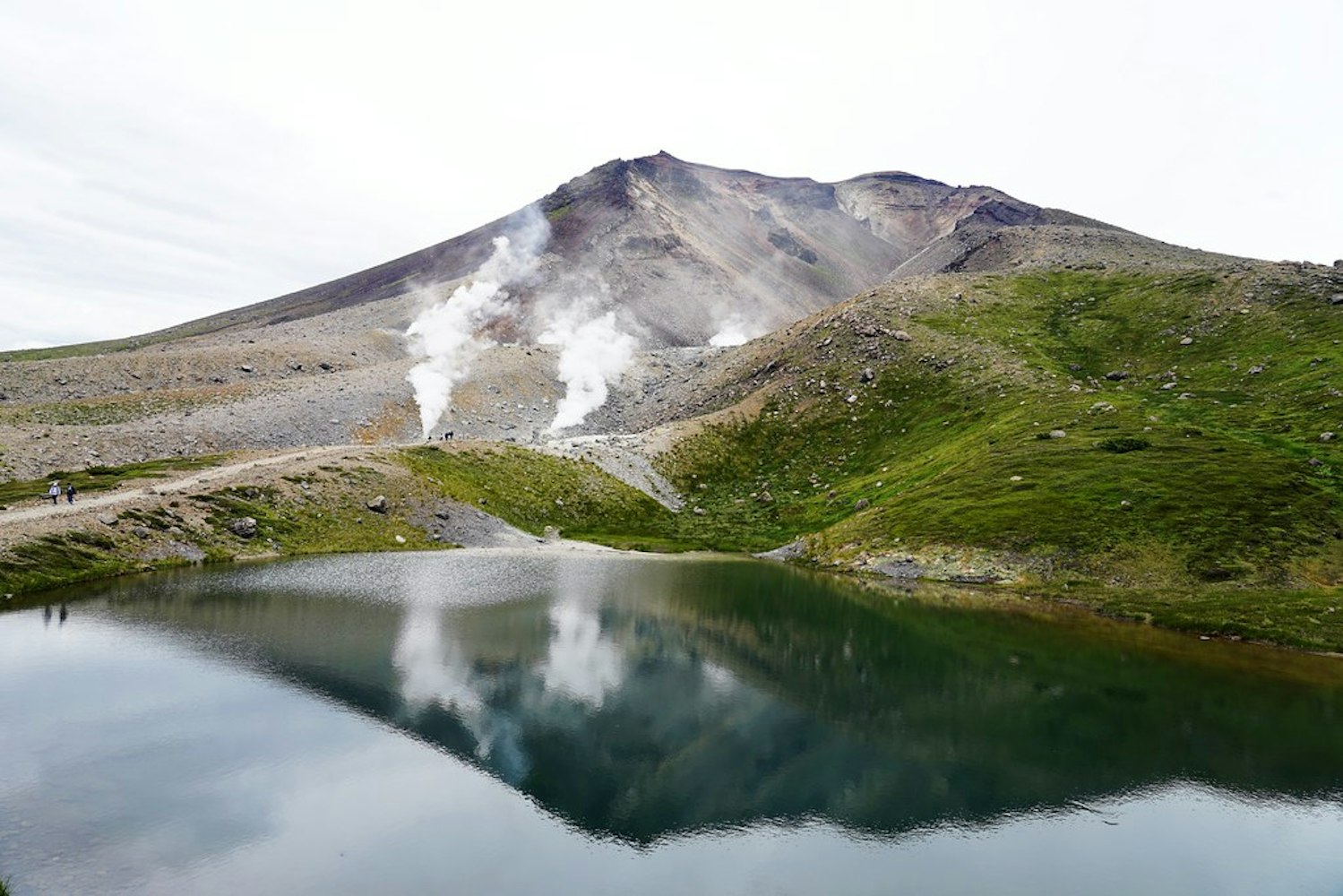
เครดิตภาพ: ลิน จูดี้(快樂雲)
จุดเด่นในอุทยานแห่งชาติไดเซ็ตสึซันคือการเดินข้ามเทือกเขาสูงหลักของอุทยาน รวมถึงอาสาฮิ-ดาเกะ ซึ่งเป็นภูเขาที่สูงที่สุดในฮอกไกโด และคุโรดาเกะ การเดินทางนี้จะเสนอทิวทัศน์ที่กว้างใหญ่และโอกาสที่จะได้สัมผัสภูมิทัศน์ที่หลากหลายของอุทยาน อีกเส้นทางที่น่าสังเกตคือเส้นทางกินเซ็นได ซึ่งเป็นที่นิยมในฤดูใบไม้ร่วงสำหรับใบไม้ที่มีสีสันของมัน เส้นทางที่หลากหลายของอุทยานให้โอกาสที่ไม่เหมือนใครในการสัมผัสความงามตามธรรมชาติของภาคเหนือของญี่ปุ่นที่ดีที่สุด อย่างไรก็ตาม เนื่องจากธรรมชาติที่ห่างไกลและหยาบกร้านของอุทยาน การเตรียมตัวจึงเป็นเรื่องสำคัญ และผู้ที่เดินทางควรมีอุปกรณ์ที่เหมาะสมต่อสภาพอากาศและโอกาสในการเผชิญหน้ากับสัตว์ป่า
เกาะยะกุชิมะ, ตั้งอยู่ที่ชายฝั่งตอนใต้ของคิวชู เป็นสถานที่ที่มีเสน่ห์ อันเป็นที่รู้จักในเรื่องป่าไม้ซีดาร์โบราณบางแห่งที่เชื่อว่ามีอายุมากกว่า 7,000 ปี เกาะนี้ได้รับการขึ้นทะเบียนเป็นมรดกโลกของ UNESCO เป็นศูนย์กลางของความหลากหลายทางชีวภาพ มีพันธุ์พืชและสัตว์ที่มีเอกลักษณ์หลากหลายที่สุด บริเวณจุดศูนย์กลางที่เต็มไปด้วยเทือกเขา มีป่าสีมอสที่หนาแน่นและน้ำตกที่ทำให้เป็นที่มาของความเชื่อในนิทานญี่ปุ่น และได้สร้างแรงบันดาลใจให้กับภาพยนตร์แอนิเมชัน "เจ้าหญิงโมโนโนเกะ"
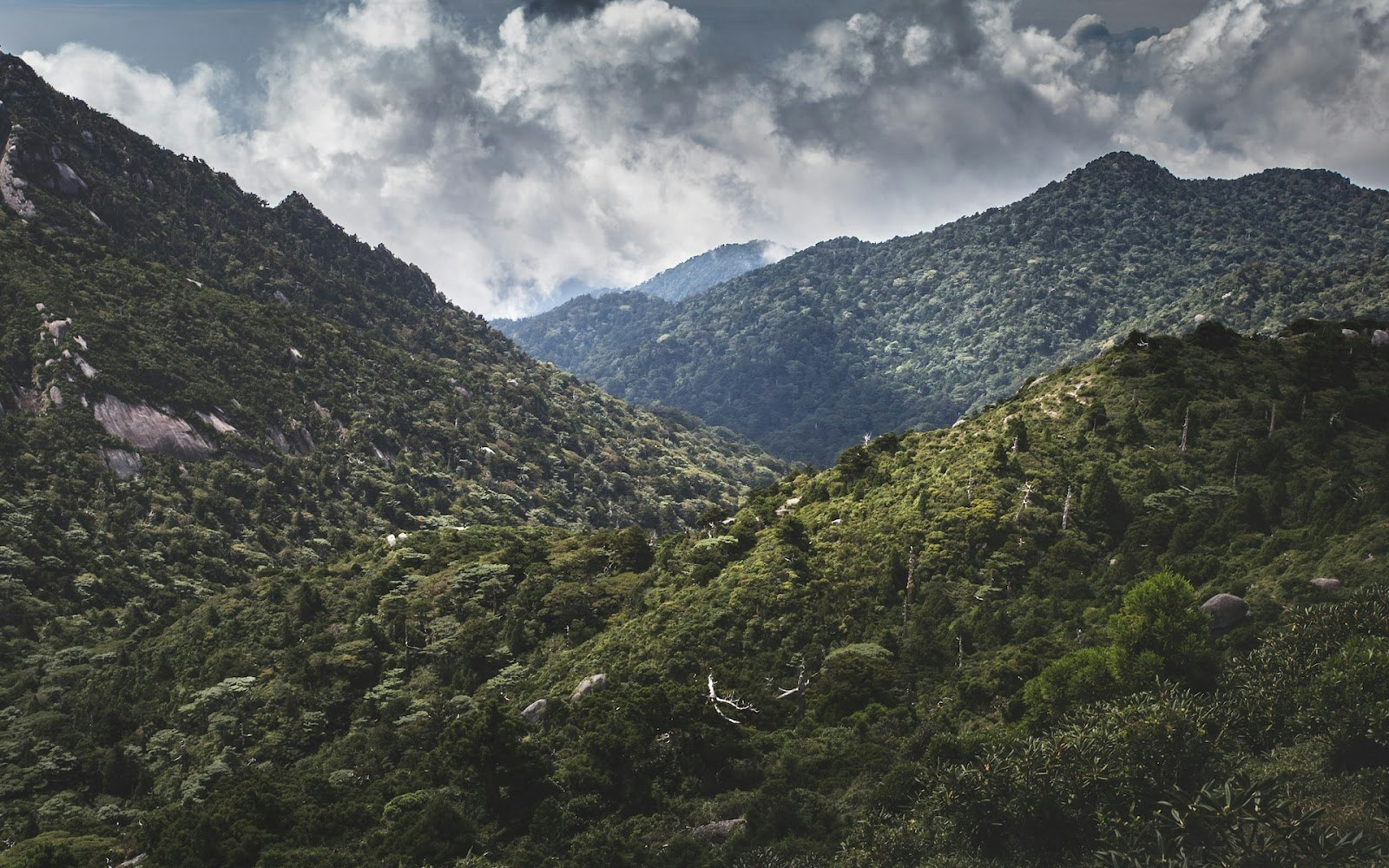
ยะกุชิมะมีเส้นทางจำนวนมากสำหรับนักเดินภูเขาทุกระดับ แต่มี 2 เส้นทางที่โดดเด่นด้วยความงดงามของมัน - เส้นทางโจมอนซูกิและเส้นทางชินาราตินุนซุยคิโย มุ่งนำไปยังต้นซีดาร์อายุที่มีชื่อเสียงที่สุดและเก่าแก่ที่สุดในเกาะซึ่งเป็นที่คาดว่าอายุตั้งแต่ 2,170 ถึง 7,200 ปี การเดินทางที่ท้าทายนี้ใช้เวลาประมาณ 9-10 ชั่วโมงในรอบ แต่ภาพที่ประทับใจของซีดาร์โบราณนั้นคุ้มค่ากับความพยายาม เส้นทางชินาราตินุนซุยคิโย เป็นทางเลือกที่ไม่ต้องใช้ความพยายามเพียงมากนัก สำรวจป่าที่มีมอสที่ลึกลับที่เป็นแรงบันดาลใจให้กับพื้นฐานของ "เจ้าหญิงโมโนโนเกะ" ไม่ว่าคุณจะเลือกเส้นทางใด การเดินป่าในยะกุชิมะจะเสนอโอกาสที่ไม่เหมือนใครในการย้อนกลับไปในเวลาและสัมผัสความมหัศจรรย์ของป่าดึกดำบรรพ์ของญี่ปุ่น
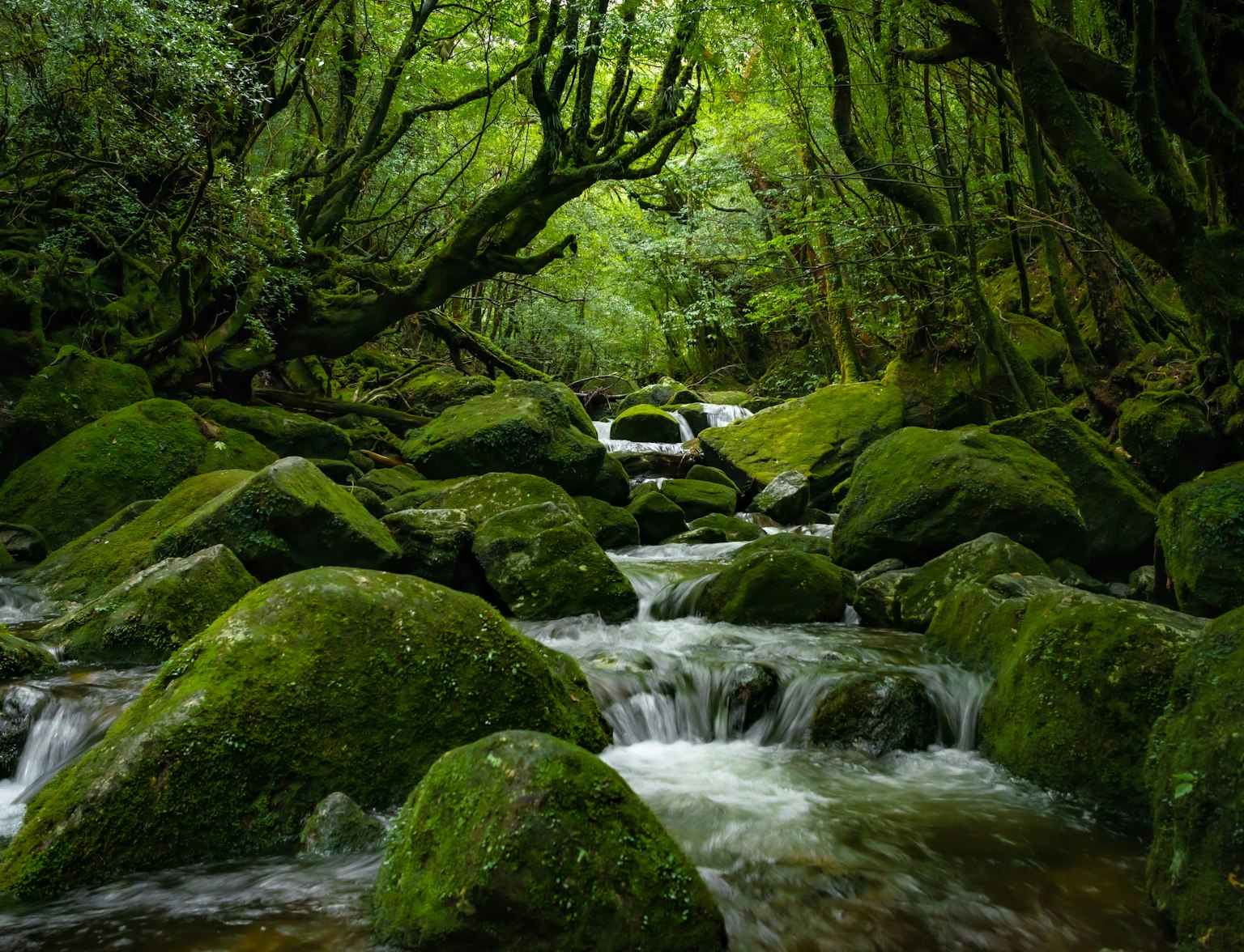
สัมผัสความงามที่ไม่มีใครแตะต้องของยาคุชิมะ
ตั้งอยู่ในเทือกเขาญี่ปุ่นตอนเหนือของ นากาโน่จังหวัด คามิโคจิคือหุบเขาที่สวยงามแห่งหนึ่งและเป็นจุดหมายปลายทางที่มีภูเขาที่ดีที่สุดในญี่ปุ่น หุบเขานี้เป็นส่วนหนึ่งของอุทยานแห่งชาติชูบุซังอากุ และมีความยาวประมาณ 15 กิโลเมตร ติดอยู่กับยอดเขาสูงของภูเขาไฟยกดาเกะและเทือกเขาฮอตากะที่โด่งดัง ความงดงามตามธรรมชาติที่ไม่หยุดยั้งของคามิโคจิ แม่น้ำอาซุซะสีเขียวมรกต และบ่อน้ำไทโชทำให้สร้างทิวทัศน์ที่ได้รับการยกย่องในวรรณกรรมและศิลปะญี่ปุ่น

มีหลายเส้นทางในคามิโคจิซึ่งมีความยากหลากหลาย เส้นทางที่ราบเรียบและง่ายซึ่งวิ่งไปตามแม่น้ำอาซุซะเป็นทางเลือกที่เป็นที่นิยมในครอบครัวและนักปีนเขาที่มีประสบการณ์น้อย ทำให้สามารถมองเห็นยอดเขาฮอตากะได้อย่างดี และโอกาสในการเห็นสัตว์ป่าท้องถิ่น สำหรับนักปีนเขาที่ชื่นชอบการผจญภัย เส้นทางสู่ยอดภูเขายกดาเกะเสนอการปีนที่ท้าทายและมุมมองที่สวยงามของภูมิประเทศโดยรอบ
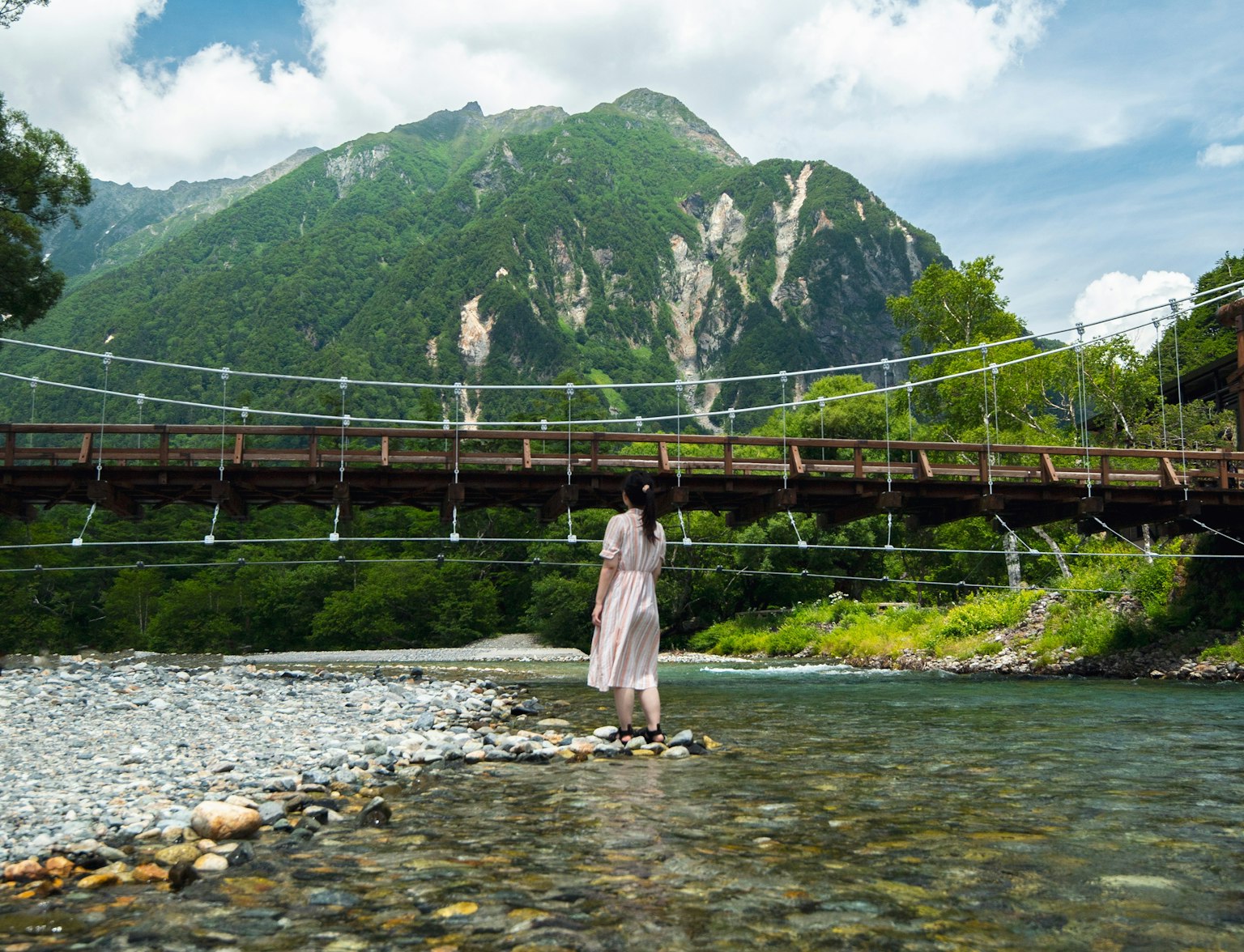
เหมาะสำหรับผู้ที่รักธรรมชาติซึ่งต้องการหลบหนีจากความยุ่งเหยิงของชีวิตในเมือง
เส้นทางแสวงบุญชิคกุ หรือที่รู้จักในชื่อ "การแสวงบุญ 88 วัด" เป็นหนึ่งในเส้นทางจิตวิญญาณที่มีชื่อเสียงที่สุดในญี่ปุ่น วงจรความยาว 1,200 กิโลเมตรนี้วนรอบเกาะชิคกุเชื่อมโยง 88 วัดพุทธที่เกี่ยวข้องกับพระภิกษุคูไคซึ่งรู้จักกันในชื่อโคโบ ไดชิ ผู้ก่อตั้งนิกายนิกโกของพุทธศาสนาในญี่ปุ่น เส้นทางพาผู้แสวงบุญผ่านภูมิประเทศที่หลากหลาย - เมืองที่พลุกพล่าน หมู่บ้านชนบทที่น่ารัก และภูเขาที่สงบ สร้างความเข้าใจอย่างลึกซึ้งเกี่ยวกับมรดกทางจิตวิญญาณและวัฒนธรรมของญี่ปุ่น
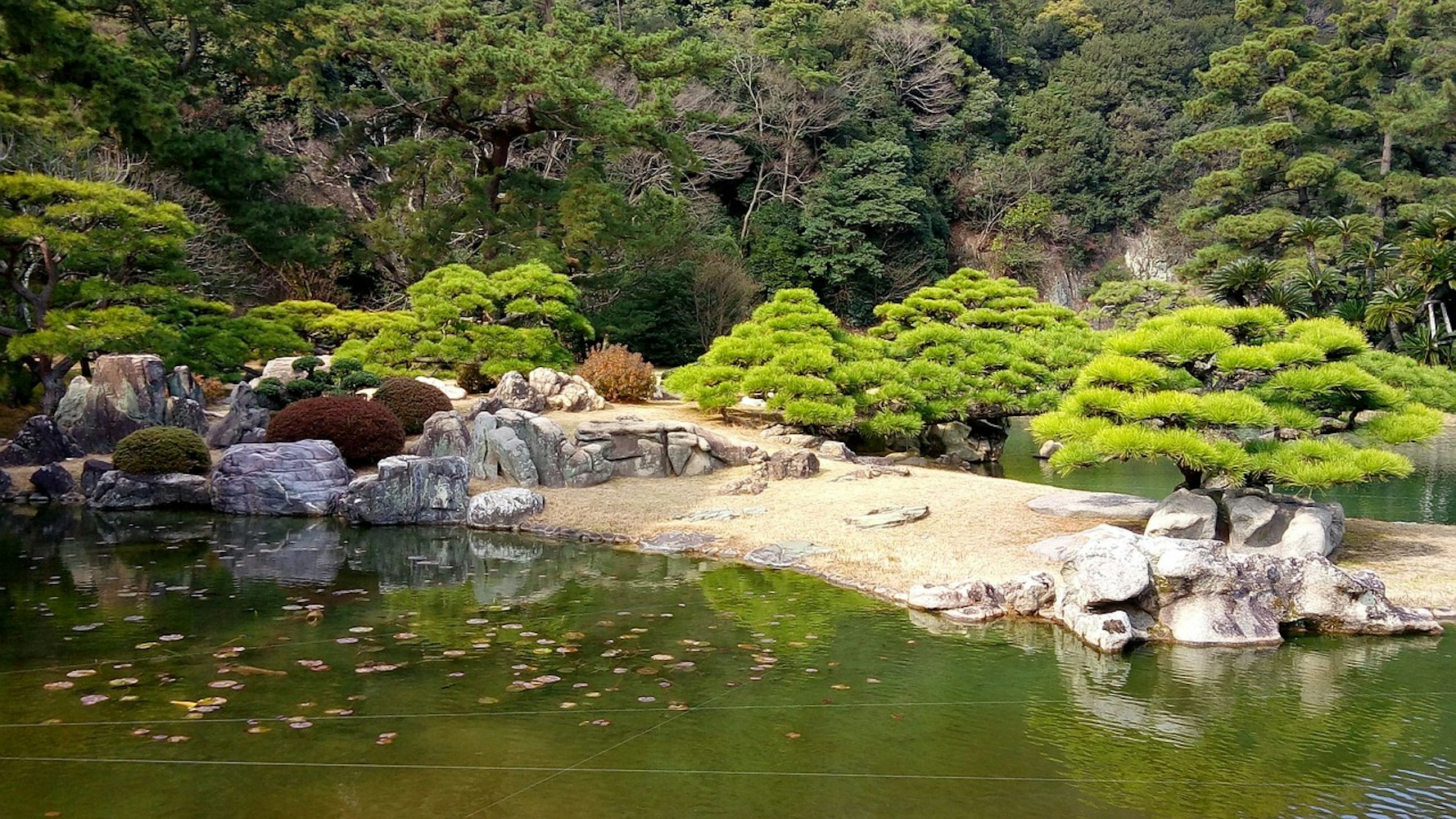
ในขณะที่มันเป็นไปได้ที่จะทำการแสวงบุญทั้งหมด ผู้เข้าชมหลายคนเลือกที่จะเดินทางในบางช่วงของเส้นทาง เส้นทางที่เป็นที่นิยมมากที่สุดรวมถึงทางเดินภูเขาที่ขรุขระระหว่างวัดที่ 60 และ 61 ทำให้มีทิวทัศน์ที่สวยงามและเส้นทางชายฝั่งระหว่างวัดที่ 24 และ 25 ซึ่งเป็นที่รู้จักในเรื่องความเงียบสงบ หากคุณกำลังวางแผนที่จะเดิน ให้แน่ใจว่าคุณเตรียมใจกับพื้นที่และสภาพอากาศ และอย่าลืมนำ osame-fuda หรือใบชื่อมาทิ้งไว้ที่วัดต่างๆ เพื่อแสดงถึงการมาเยือนของคุณ ขณะที่คุณเดินทางจากวัดสู่วัด คุณจะได้สัมผัสถึงความท้าทายทางกายภาพและการสนทนาอย่างลึกซึ้งที่ทำให้การเดินทางแสวงบุญชิคกุเป็นประสบการณ์ที่เปลี่ยนแปลงชีวิตอย่างแท้จริง
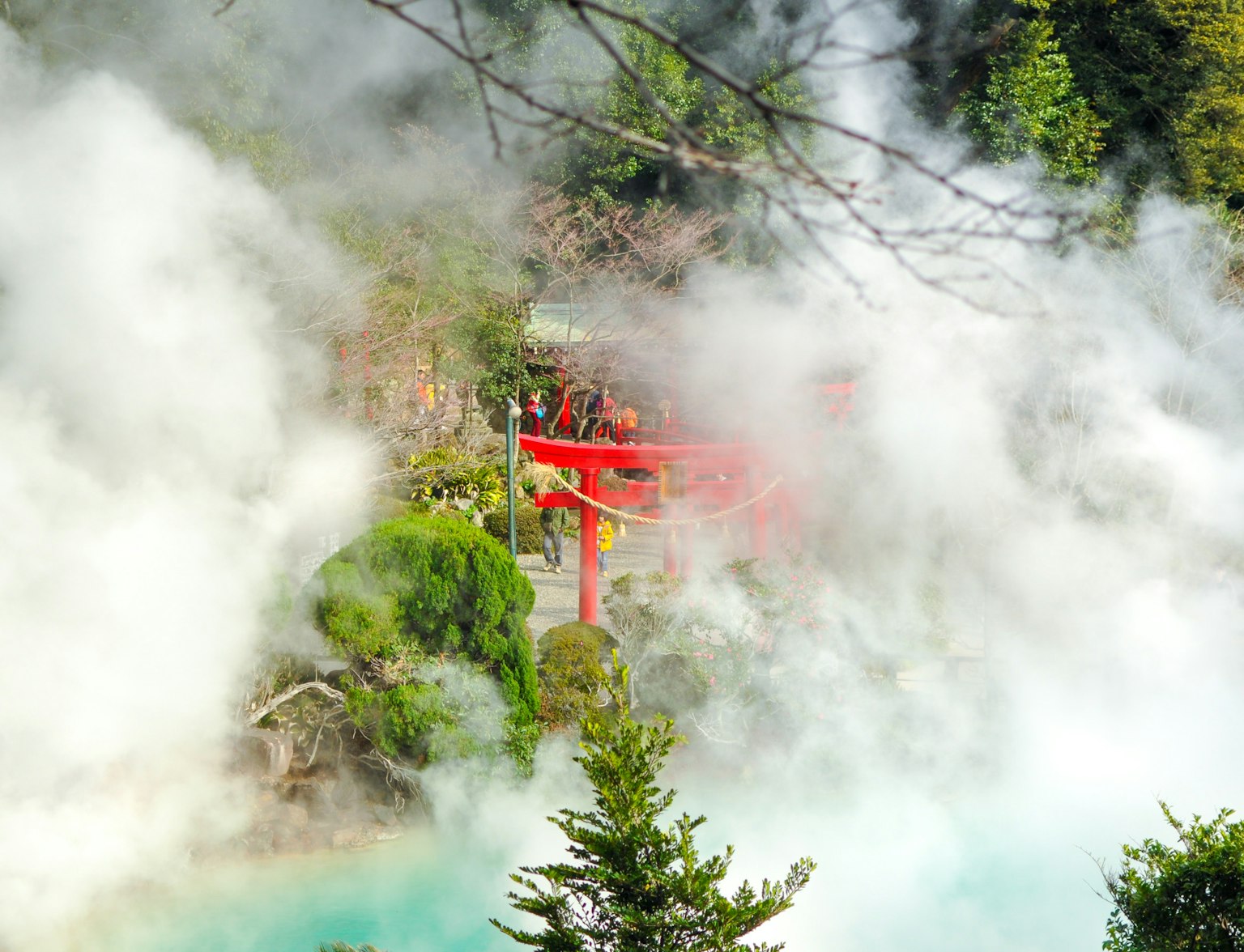
สำรวจชิโกกุด้วยทัวร์นี้
ภูเขาโคยะ หรือ โคยะซัง, เป็นภูเขาศักดิ์สิทธิ์ที่ตั้งอยู่ในจังหวัดวากายามะ โดยทำหน้าที่เป็นศูนย์กลางด้านจิตวิญญาณของพุทธศาสนาชิงงอนในญี่ปุ่น ก่อตั้งโดยโคโบ ไดชิ (คูไค) ในศตวรรษที่ 9 โคยะซังเป็นมรดกโลกของยูเนสโกและเป็นสถานที่แสวงบุญที่สำคัญ ภูเขานี้มีความซับซ้อนของวัดในเจ็ดนิกายนักบวชซึ่งผู้เข้าชมสามารถเข้าพักในที่พักภายในวัดและเข้าร่วมพิธีกรรมทางพุทธศาสนา เพิ่มพูนมิติทางจิตวิญญาณของการเยี่ยมชมของพวกเขา
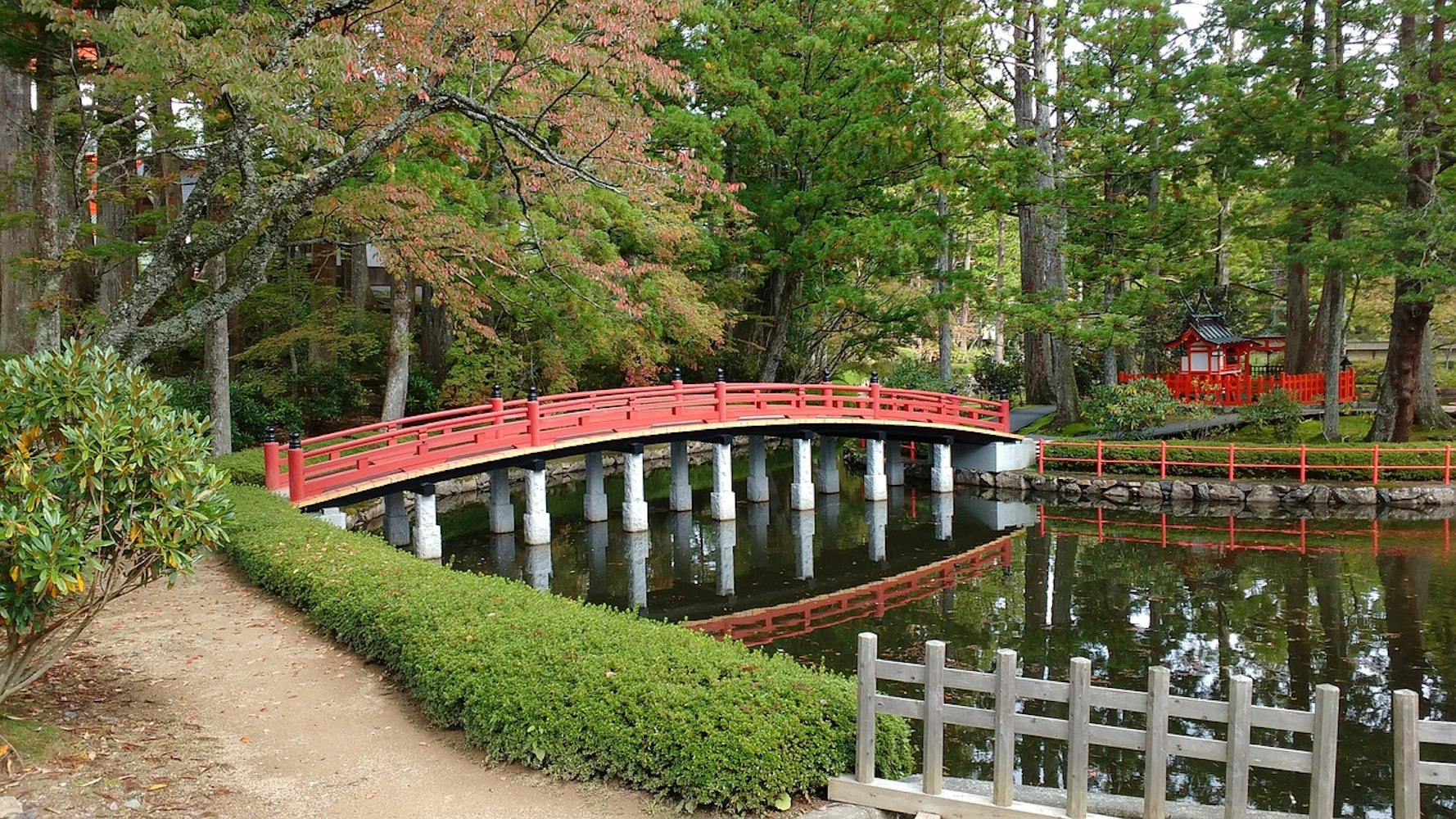
เส้นทางโชชิ มิจิ คือเส้นทางแสวงบุญแบบดั้งเดิมที่นำไปสู่ภูเขาโคยะ เส้นทางเริ่มต้นจากเมืองคุโดะยามะ และมีเครื่องหมายหิน 180 "โชอิชิ" หรือตัวชี้จัดวางอยู่ที่ระยะประมาณ 109 เมตร มันแทนที่ความปรารถนา 108 ประการในความเชื่อทางพุทธศาสนา การเดินทางตามเส้นทางโชชิ มิจิ คือการเดินทางเข้าสู่วรรณกรรมจิตวิญญาณของญี่ปุ่น โดยมีความยาวประมาณ 24 กิโลเมตรและใช้เวลาประมาณ 7 ชั่วโมงในการเสร็จสิ้น เส้นทางนี้จะตัดผ่านป่าหนาทึบและภูเขาที่ลำบากก่อนที่จะสิ้นสุดที่สุสานโอคุน่อนไน ซึ่งเป็นที่ตั้งมั่นของอนุสาวรีย์ของโคโบ ไดชิ
เส้นทางคุมาโนะโคโด เป็นเครือข่ายของเส้นทางแสวงบุญโบราณที่กระจายอยู่ทั่วคาบสมุทรคิอิในวากายามะตอนใต้ เส้นทางเหล่านี้ได้กลายเป็นเส้นทางจิตวิญญาณมานานกว่า 1,000 ปี นำไปสู่ศาลเจ้าใหญ่สามแห่งของคุมาโนะ - ฮงกุ ไทชะ ฮายาตามะ ไทชะ และนาจิ ไทชะ ในฐานะมรดกโลกของยูเนสโก คุมาโนะโคโด เป็นหนึ่งในสองเส้นทางแสวงบุญในโลกที่ได้รับพื้นที่นี้ ซึ่งอีกเส้นทางเป็น Camino de Santiago ในสเปน
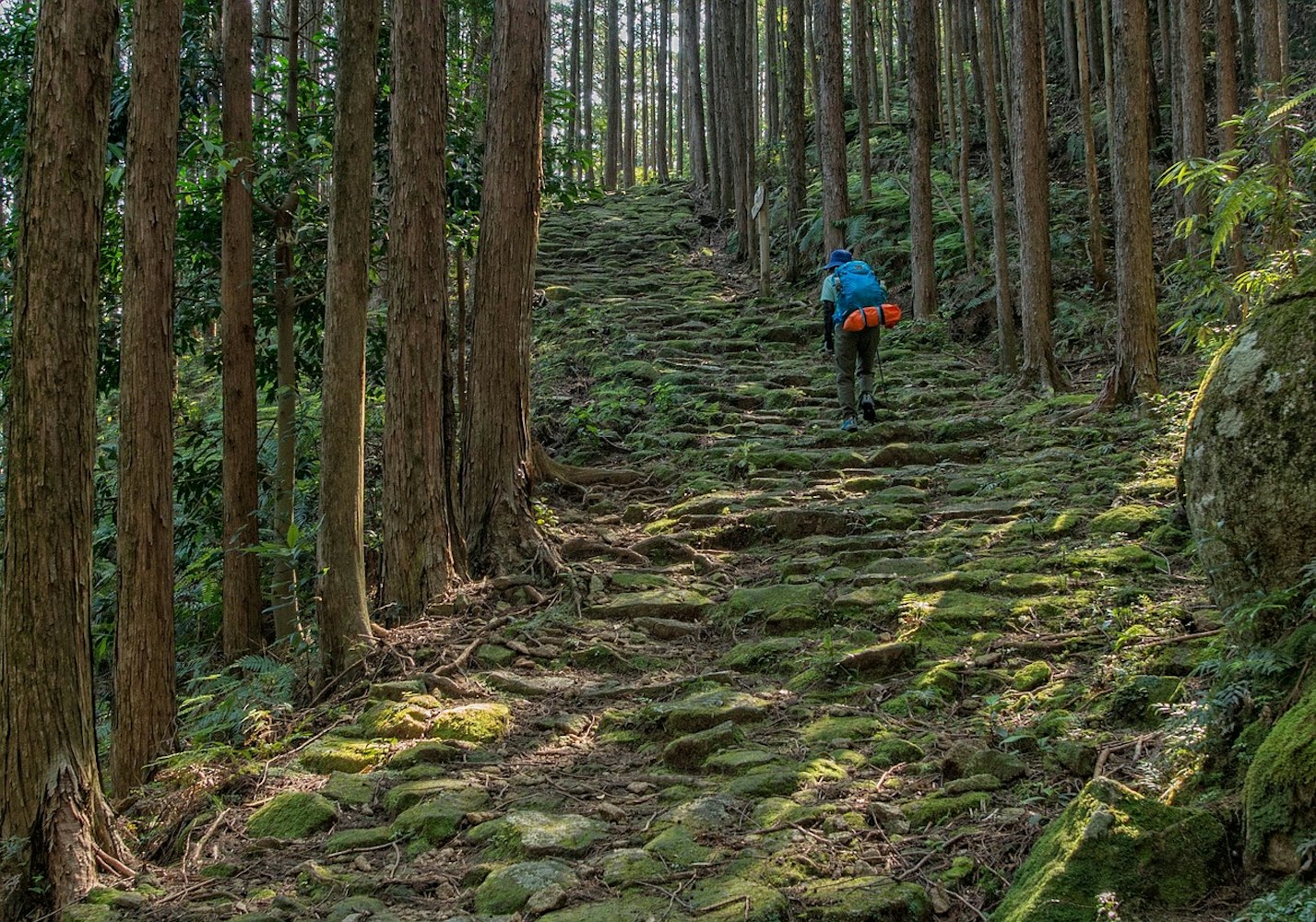
เครดิตภาพ: คาเนนอริ
เส้นทางคุมาโนะโคโด ประกอบด้วยเส้นทางหลายเส้นที่นำเสนอประสบการณ์ที่แตกต่างกันไป เส้นทางนาคาเฮชิเป็นที่นิยมมากที่สุดเริ่มต้นจากเมืองทานาเบะที่ชายฝั่งด้านตะวันตกของคาบสมุทรคิอิและข้ามพื้นที่ภูเขาไปยังส่วนใหญ่ของศาลเจ้าคุมาโนะ ส่วนเส้นทางโคเฮจิ เชื่อมโยงโคยะซังและคุมาโนะซันซังและเป็นเส้นทางที่ท้าทายมากกว่า ต้องใช้การเดินทางข้ามภูเขาหลายวัน ส่วนเส้นทางอิเสจิที่ชายฝั่งด้านตะวันออกของคาบสมุทรมีทิวทัศน์ชายฝั่งที่สวยงามและผ่านไร่ชาที่มีทิวทัศน์ที่สวยงาม
ภูเขาเฮอิ ซึ่งตั้งอยู่ตรงชายแดนระหว่าง เกียวโต กับจังหวัดชิกะ เป็นสถานที่สำคัญทางประวัติศาสตร์ในญี่ปุ่น เป็นที่รู้จักในชื่อภูเขาแม่แห่งพุทธศาสนาญี่ปุ่น ที่นี่มีวัดเอนเรียวกุ ซึ่งเป็นสำนักงานใหญ่ของเสนาชนะที่ก่อตั้งโดยไซโชในปี ค.ศ. 788 ภูเขาและสถานที่ทางประวัติศาสตร์ที่นี่ยังได้รับการยอมรับเป็นมรดกโลกของยูเนสโกในฐานะส่วนหนึ่งของอนุสรณ์สถานโบราณในเกียวโต ภูเขาเฮอิที่มีมรดกทางวัฒนธรรมที่บรรจบเข้ากับความสวยงามของธรรมชาติ เสนอทิวทัศน์ที่กว้างขวางที่มองเห็นเกียวโตและทะเลสาบบิ วา ซึ่งเป็นทะเลสาบน้ำจืดที่ใหญ่ที่สุดในญี่ปุ่น
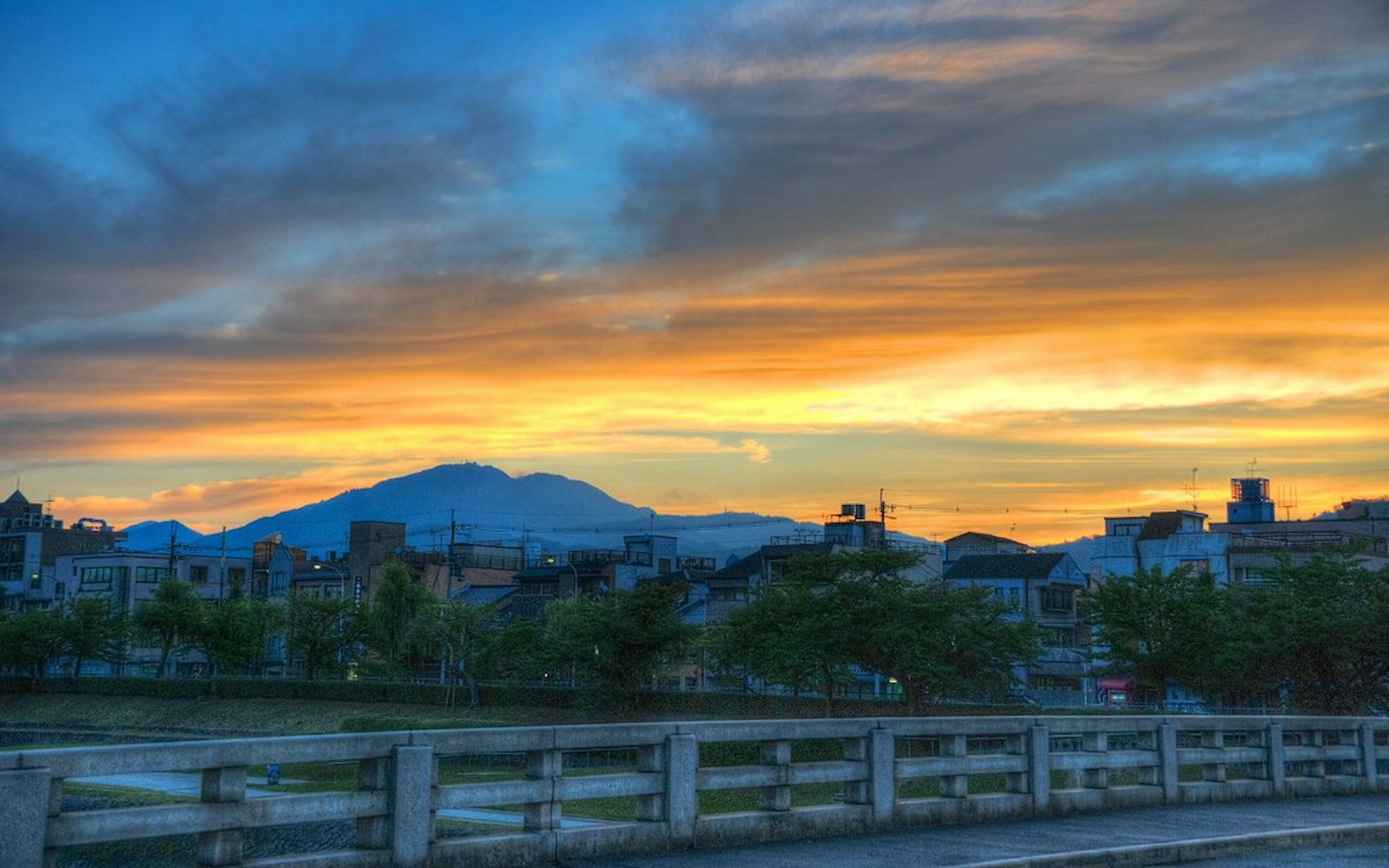
เครดิตภาพ: ชิบุยา246
ภูเขานี้มีเส้นทางเดินหลายสายที่ทำให้คุณได้เพลิดเพลินตั้งแต่การเดินเล่นเบาๆ จนถึงการเดินที่มีความท้าทายขึ้นมา หนึ่งในเส้นทางที่เป็นที่นิยมเริ่มต้นที่ด้านล่างของฝั่งเกียวโตและตามทางเดินแสวงบุญประวัติศาสตร์ไปยังยอดเขาใช้เวลาประมาณ 3 ชั่วโมง เส้นทางนี้จะผ่านป่าทึบโดยเปิดออกไปที่ยอดเขาเพื่อให้มองเห็นทิวทัศน์ที่น่าตื่นตาตื่นใจ ไฮไลท์รวมถึงกลุ่มวัดเอนเรียวกุ ขั้นตอนการจัดสวนและป่าไม้อันงดงามรอบข้าง
อุทยานแห่งชาติออเซะซึ่งมีสี่จังหวัด - กุนม่า, ฟุกุชิมะ, นีกาตะ และโทจิกิ เป็นภูมิทัศน์ธรรมชาติที่สุดรักที่สุดในญี่ปุ่น อุทยานนี้มีชื่อเสียงในเรื่องของหนองน้ำที่กว้างขวาง ซึ่งเป็นที่ใหญ่ที่สุดในญี่ปุ่น ที่ถูกโอบล้อมด้วยยอดเขาที่งดงาม ช่วงเวลาอากาศที่อบอุ่น อุทยานจะเต็มไปด้วยสีสันจากดอกกะหล่ำปลีที่บานและหญ้าสีแดงในฤดูใบไม้ร่วง ทำให้เป็นจุดหมายปลายทางที่นิยมสำหรับรักฉันและนักเดินเขา
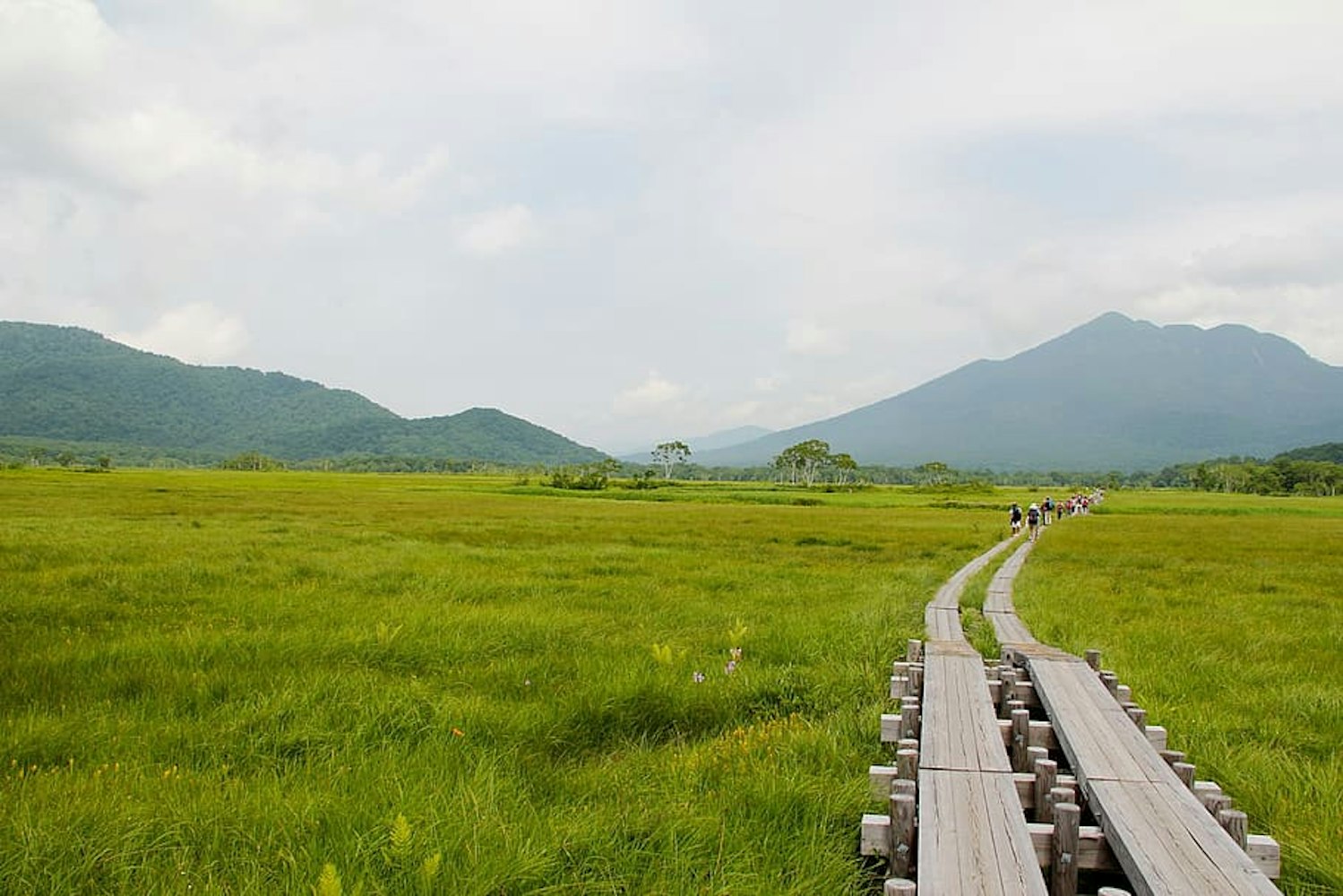
การเดินป่าเป็นกิจกรรมที่ชื่นชอบในอุทยานแห่งชาติออเซะ เส้นทางไม้ที่ได้รับการดูแลรักษาอยู่ในสภาพดีช่วยให้ผู้เข้าชมข้ามพื้นที่หนองน้ำได้โดยไม่ทำให้ระบบนิเวศที่บอบบางรบกวน เส้นทางหลักวิ่งจากฮาโตมาชิโตเกะไปยังนุมายามะโทเกะผ่านหนองน้ำโอเซ็กาล่าออเซะ และบ่อน้ำโอเซนะซึ่งให้มุมมองที่น่าทึ่งเกี่ยวกับภูมิทัศน์ที่เป็นเอกลักษณ์ของอุทยาน สำหรับนักเดินที่มีความรักการผจญภัย การเดินเขาขึ้นสูายอดภูเขา ชิบุตซึเสนให้มุมมองที่กว้างขวางของพื้นที่รอบข้าง
ในใจกลางของพัฒนาการที่มีพลังของญี่ปุ่นคือความเชื่อมโยงอันลึกซึ้งของผืนแผ่นดินที่แสดงออกมาในเส้นทางเดินป่าและเมื่อได้พยายามออกที่จะเขียนเรื่องราวใหม่ ทีละเส้นทางนำเสนอความงดงามทางธรรมชาติซึ่งมีความสำคัญต่อประวัติศาสตร์และการแทรกซึมทางวัฒนธรรม เสนอทางไปสู่ประสบการณ์เปลี่ยนแปลงชีวิตที่แท้จริงไม่ว่าจะเป็นนักเดินป่าที่มีประสบการณ์หรือผู้เดินเพียงสนุกสนานที่พยายามจะเดินเล่นอย่างสงบในภูมิประเทศที่เงียบสงบ
ภูมิประเทศของญี่ปุ่นที่หลากหลายอันงดงามดึงดูดนักกิจกรรมกลางแจ้งจากทั่วโลก ระหว่างเนินเขาที่โด่งดังของฟูจิโดยภูเขาโบราณที่น่าสวดมนต์แห่งชิคกุและเส้นทางคุมาโนะโคโด ไปจนถึงเกาะยะกุชิมะที่มีต้นไม้ลึกลับและหนองน้ำของอุทยานแห่งชาติออเซ ใคร ๆ ก็มีเส้นทางที่ตอบสนองตามความฝันของนักเดินป่าแต่ละคน ทุก ๆ เส้นทางเต็มไปด้วยเสน่ห์และเรื่องราวที่รอการสำรวจ ประสบการณ์และเฉลิมฉลอง ดังนั้นบรรจุอุปกรณ์เดินป่าของคุณและปล่อยให้การผจญภัยในการเดินทางเหล่านี้เกิดขึ้นเหนือไปตามพื้นดินที่น่าหลงใหลของญี่ปุ่น



